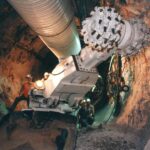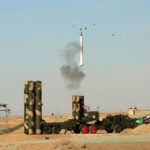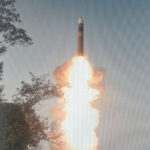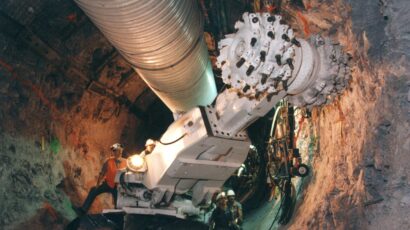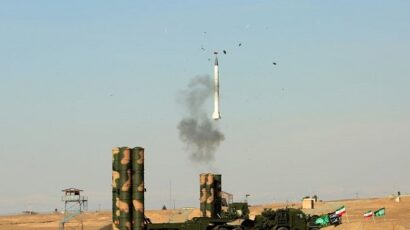The rebirth of Russia’s closed cities
By Dmitriy Nikonov, Igor Khripunov | October 16, 2008
Almost upon developing the bomb, the Soviet Union enforced strict security measures within its nuclear weapons complex. In particular, it established so-called “closed cities”–one-employer settlements complete with travel restrictions and barb-wired perimeters that were tasked with designing, manufacturing, and servicing the most sensitive pieces of the Soviet nuclear weapons arsenal. For decades, the closed cities were the country’s crown jewels, and as such, they had substantially better living conditions, infrastructure, and lower crime rates than the rest of the country. But when the Soviet Union collapsed in 1991, government support for the closed cities almost disappeared entirely, leaving them in a dire state for much of the 1990s and the early portion of this decade.
With Russian coffers swollen in recent years with profits from the country’s high-priced natural gas and oil reserves, however, the closed cities have begun to see their federal funding return and their agendas fill with new civilian scientific missions–especially in support of Moscow’s aggressive plans to become a major builder and exporter of nuclear energy-related technologies.
Reorganization
As of April 2007, Russia maintained 41 closed cities. Ten remain focused on nuclear weapons and energy research; Moscow has transferred their management to the Rosatom State Corporation–a quasi-privatized entity that was once the Federal Agency for Atomic Energy. Within Rosatom, the nuclear weapon and energy facilities were separated to allow private Russian and foreign investment. As a result, only six closed cities remain focused exclusively on weapons. The four others (Seversk, Novouralsk, Zheleznogorsk, and Zelenogorsk) joined Rosatom’s nondefense branches including the newly established Atomenergoprom, a subsidiary of Rosatom that oversees the corporation’s civilian nuclear power sector. In recent years, these four cities have been transformed to support, among other projects, Russia’s ambitious plans to build some 50 new nuclear power reactors by 2030–both inside and outside the country. In particular, they work on nuclear fuel fabrication and reactor design.
Currently, the government owns all of Rosatom’s and Atomenergoprom’s shares. But that dynamic may change due to the substantial private capital needed to realize Moscow’s ambitious nuclear energy plans. In fact, Prime Minister Vladimir Putin recently announced [in Russian] that the government will invest up to $40 billion in nuclear energy by 2015, but after that, most new reactor construction will depend upon industry and private funding.
Of course, nongovernmental investment and redevelopment along these lines suffers from the fact that the cities are so secretive in nature. For those under the jurisdiction of the Russian Defense Ministry, opening up is relatively simple. When nuclear weapons are relocated to other closed sites or dismantled as part of the country’s arms control obligations, the city is opened up or simply shut down. Indeed, the Defense Ministry has steadily shut down closed cities as Moscow’s nuclear weapons deployment has shrunken.
For closed cities not under Defense Ministry jurisdiction, the situation is different. These cities host individual pieces of Russia’s nuclear weapon design and production capacity, have one of the highest concentrations of scientists and engineers in Russia, and receive a portion of the $1.7 billion federal program for the development of the Russian nuclear weapons complex. The efforts to convert them to civilian research and open them to private investment has had mixed results. For example, in May 2006, Moscow designated the Federal Security Service (formerly the KGB), as the agency responsible for screening investment proposals in the closed cities; unsurprisingly, the results were disappointing. Similarly, most foreign-assistance programs such as the U.S. Nuclear Cities Initiative or the British Closed Nuclear Cities Partnership have failed to reach their original goals because of difficulties in accessing closed city facilities and a lack of coordination among the Russian government agencies that managed the cities.
One option for opening up the nuclear cities is to literally dismantle the fences and barriers along their perimeters and install state-of-the-art physical protection systems close to the facilities. As the chairman of the Federation Council’s Committee on Security, emphatically stated in March 2007 [in Russian], “People cannot live in a closed facility; whole cities cannot be deprived of the opportunity to develop other sectors of their economy.” But the government isn’t prepared to accept this option in the short-term, despite support from regional authorities. Rosatom Director Sergey Kirienko is on the record [in Russian] emphasizing that his agency will not initiate the opening of Russia’s nuclear cities, and the government’s official position is that while some closed cities will become more involved in commercial civilian activity, they will remain closed.
New missions
In the last two years alone, commercial projects at the closed cities have included a techno-park under development near Sarov; a pharmaceutical plant in Novouralsk; and clusters of small and medium-sized businesses around Trekhgornyi. In Seversk, efforts are underway to build a nuclear power plant and encourage more investment to provide jobs after Russia’s last plutonium-producing reactor shut down there this year. Three closed cities under Atomenergoprom’s control (Novouralsk, Seversk and Zelenogorsk) stand to benefit the most from such commercial focus. Each is expanding its uranium enrichment and nuclear fuel fabrication capacities in anticipation of growing domestic and foreign demand.
But that’s not to say that investment and collaboration with other sectors of the Russian economy can’t exist for the non-Atomenergoprom-affiliated closed cities. For instance, after 16 years of construction, the polycrystalline silicon manufacturing plant in Zheleznogorsk finally opened last month. Plans [in Russian] call for the production of 200 tons of silicon for use in the production of computer chips per year by next year and 500 tons in 2010. In addition, Rosatom just announced plans to build a mixed-oxide fuel fabrication facility in Zheleznogorsk by 2012.
Earlier this year, Rosatom signed a cooperative agreement with Rosnanotech, a state corporation that controls approximately $5.2 billion for Russian nanotech projects. While general in nature, this agreement will allow additional investment in Rosatom facilities and the closed cities under its jurisdiction. Considering reports [in Russian] that Russia is actively developing nanotechnologies and nanomaterials for military purposes, the closed cities’ expertise in this area may result in a substantial future investment.
While certain closed cities have shifted into commercial ventures and seen their fortunes rise, the exclusively defense-focused closed cities aren’t completely cut off. Between 2003 and 2006, government investment in nuclear weapons-related research grew more than two times, according to Kirienko, who has called [in Russian] for the development of a special federal program to further fund these military-focused closed cities focused on military applications. And last year, two committees in Russia’s upper chamber of parliament–one on security, the other on industrial policy–met in Seversk to discuss [in Russian] their status, security, and future development. At least two new bills currently under consideration would provide a domestic legal framework for the handling and control of nuclear weapons, and, more importantly, would clearly define the status of closed cities engaged in nuclear weapons work and provide for their uninterrupted and sufficient funding.
Along these lines, there are also many ongoing programs between Russia and the West that include collaboration between the closed cities engaged mostly in nuclear weapons work and the U.S. Cooperative Threat Reduction Program, the British Closed Nuclear Cities Partnership, and direct lab-to-lab contacts. (We should note, however, that given the recent downturn in Russia’s relations with the West following the Georgia conflict, these projects may be scaled back in the near future, if not phased out entirely.)
One of the better-known U.S.-Russian bilateral programs, the Megatons to Megawatts program, which provides downblended highly enriched uranium from Russian nuclear warheads for use in U.S. light water reactors (generating 10 percent of U.S. electricity), is set to expire in 2013 and Russia has announced that it won’t renew the agreement. Four closed cities (Mayak, Seversk, Zelenogorsk, and Novouralsk) have been involved in the program, each performing different functions. Since they earn $500 million in annual revenue from the program, its termination may be difficult at first, but with increased government investment in civilian and defense programs, it’s likely that they won’t suffer great losses.
Moving forward, the biggest obstacle facing the closed cities involves staffing. Unfortunately, because middle-aged nuclear professionals left the closed cities during their downturn, the number of specialized Russian professionals who can take on these new missions is dangerously low. To remedy this problem, Rosatom has created incentives to lure younger workers back. For example, at the annual end-of-the-year press conference at the Institute of Experimental Physics in Sarov, the institute’s director Radiy Ilkaev detailed new remuneration policies for its junior employees–i.e., an extension of special subsidies up to the fifth year of employment and a more equitable distribution of grant money. A new plan recently announced [in Russian] by the government to encourage the study of nuclear physics and engineering will unify the Moscow Engineering and Physics Institute and 23 other educational and research institutions–some of which were intentionally placed inside the closed cities–into a national nuclear university. Such efforts have already helped lower the average age of Russian nuclear industry employees from 53 to 48 years old.
Recommendations
As the previously monolithic archipelago of Russian closed cities develops in the free-market economy, it’s inevitable that most of them will become much more open. The exact timeframe will depend on the evolving role of nuclear weapons in Russia’s national defense strategy, its progress on nuclear disarmament, and whether it can install state-of-the-art security closer to its nuclear facilities inside the closed cities. The government is still vague about its long-term plans, but a logical, short-term move would be to start opening the cities gradually, keeping them closed, but easing up on regulations governing who can visit or live there.
Together, we make the world safer.
The Bulletin elevates expert voices above the noise. But as an independent nonprofit organization, our operations depend on the support of readers like you. Help us continue to deliver quality journalism that holds leaders accountable. Your support of our work at any level is important. In return, we promise our coverage will be understandable, influential, vigilant, solution-oriented, and fair-minded. Together we can make a difference.
Topics: Nuclear Energy, Nuclear Weapons, Opinion


